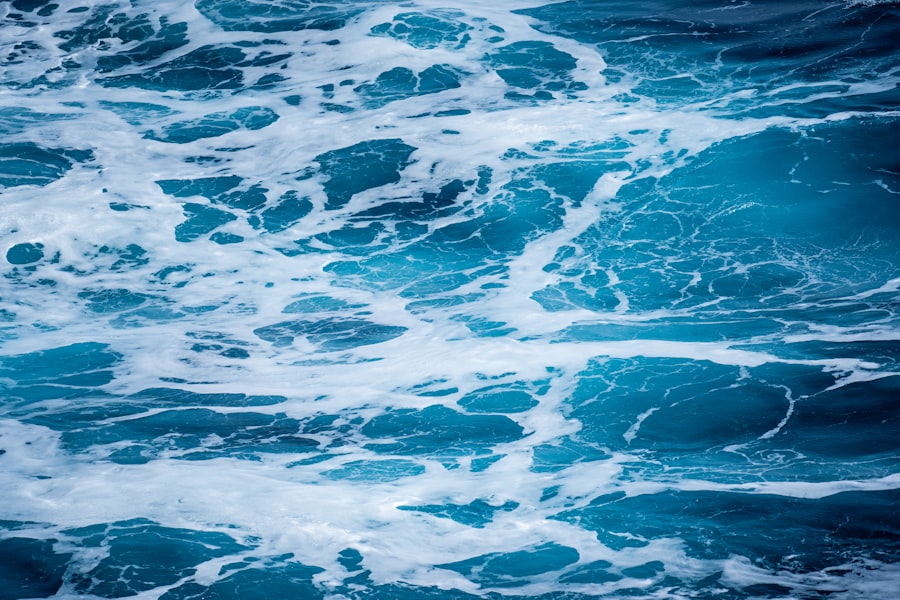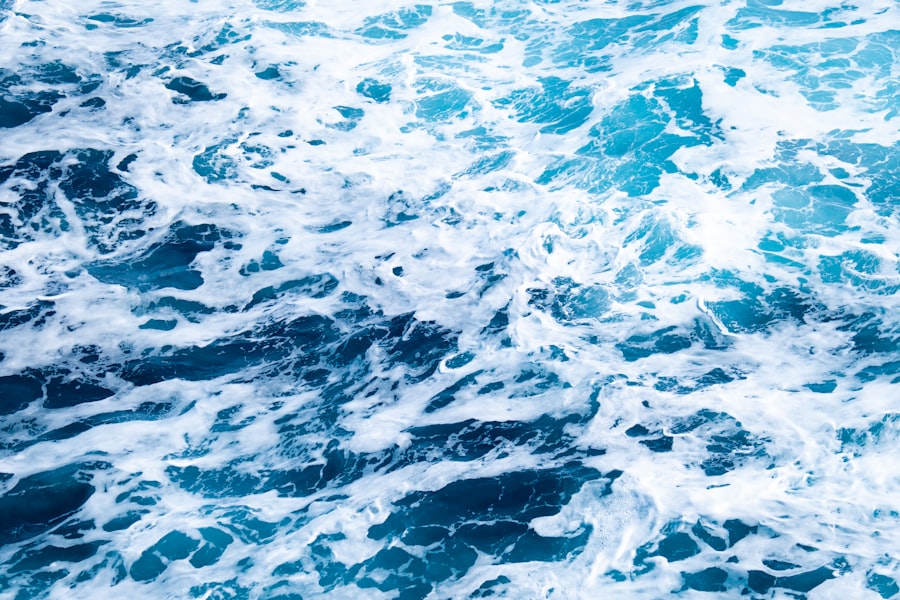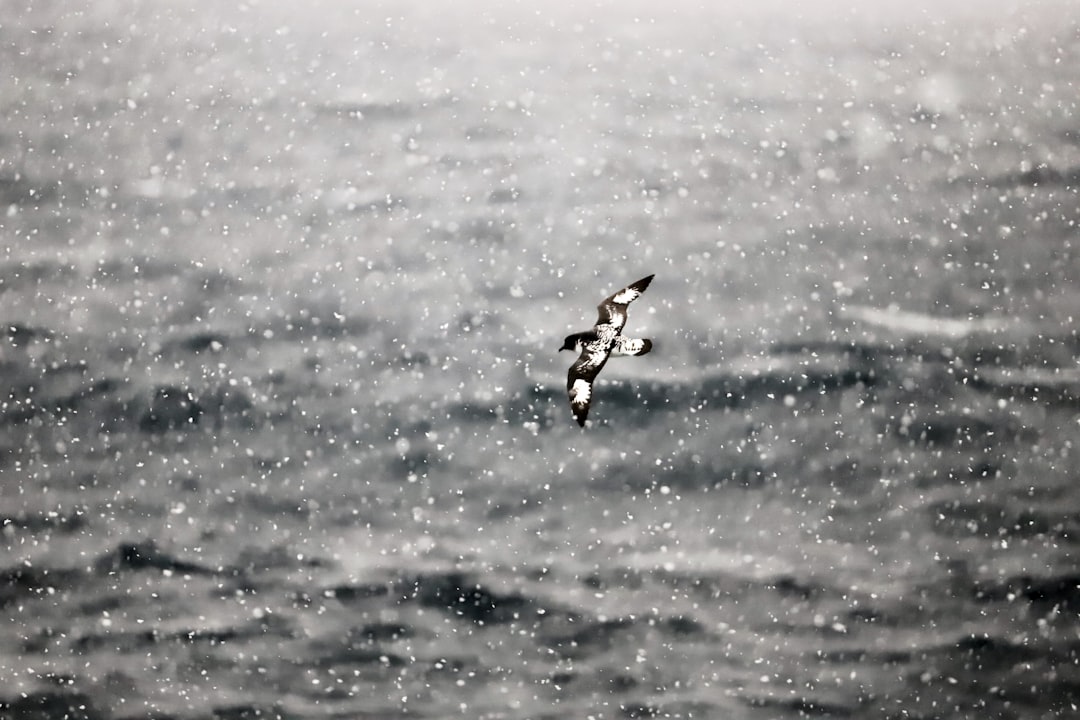The Drake Passage, a body of water that separates South America from Antarctica, is renowned for its tumultuous seas and unpredictable weather. Named after the English explorer Sir Francis Drake, who navigated these waters in the late 16th century, the passage has become a significant route for maritime travel between the Atlantic and Pacific Oceans. Its strategic location not only serves as a gateway to the Antarctic but also presents a unique blend of natural beauty and perilous conditions that have captivated explorers, scientists, and adventurers alike.
This narrow stretch of ocean, measuring approximately 600 miles in width, is often regarded as one of the most challenging maritime routes in the world. The Drake Passage is characterized by its strong currents, high winds, and the convergence of various oceanic systems, making it a focal point for those seeking to understand the complexities of oceanography and climate. As travelers embark on journeys through this formidable passage, they are not only traversing a physical space but also engaging with a rich tapestry of history, ecology, and human endeavor.
Key Takeaways
- The Drake Passage is a treacherous body of water located between South America’s Cape Horn and the South Shetland Islands of Antarctica.
- The geography and climate of the Drake Passage are characterized by strong winds, rough seas, and unpredictable weather patterns due to its location as a funnel for the Antarctic Circumpolar Current.
- The Drake Passage holds historical significance as a route for early explorers and has been the site of many famous expeditions, including those of Sir Francis Drake and Ernest Shackleton.
- Navigating the Drake Passage poses challenges and dangers such as extreme weather conditions, icebergs, and strong currents, making it one of the most challenging maritime routes in the world.
- Safe navigation through the Drake Passage requires careful planning, experienced crew, and the use of modern technology to mitigate the risks associated with the journey.
Understanding the geography and climate of the Drake Passage
Geographically, the Drake Passage is situated between Cape Horn at the southern tip of South America and the Antarctic Peninsula. This unique positioning allows for a confluence of oceanic currents, including the Antarctic Circumpolar Current, which flows unimpeded around the globe. The passage’s depth varies significantly, with some areas plunging to over 15,000 feet, creating an underwater landscape that is as diverse as it is dramatic.
The interaction between these deep waters and the surface currents contributes to the passage’s notorious reputation for rough seas. The climate of the Drake Passage is equally unpredictable. It is influenced by both polar and temperate weather systems, resulting in rapidly changing conditions that can shift from calm to stormy within moments.
The region experiences frequent storms, particularly during the winter months when fierce winds can reach speeds of over 60 knots. These climatic challenges are compounded by the cold waters that flow from Antarctica, which can create dense fog and low visibility. Understanding this geography and climate is crucial for anyone planning to navigate these waters, as it directly impacts safety and navigation strategies.
Historical significance and exploration of the Drake Passage

The historical significance of the Drake Passage cannot be overstated. It has long been a critical route for explorers seeking to chart new territories and expand their knowledge of the world. Sir Francis Drake himself was one of the first Europeans to navigate these waters in 1578 during his circumnavigation of the globe.
His journey not only opened up new trade routes but also marked a pivotal moment in maritime exploration, as it demonstrated the potential for sea travel around the southern tip of South America. In subsequent centuries, the Drake Passage continued to attract explorers and adventurers. The 19th century saw an influx of whalers and sealers drawn by the rich marine resources found in these waters.
The passage became a vital link for scientific expeditions aimed at studying Antarctica’s unique ecosystems and geology. Notable figures such as Ernest Shackleton and Robert Falcon Scott traversed these treacherous waters during their quests to reach the South Pole, further solidifying the passage’s place in the annals of exploration history.
Challenges and dangers of navigating the Drake Passage
| Challenges and Dangers of Navigating the Drake Passage |
|---|
| Rough seas and strong winds |
| Potential for icebergs and ice floes |
| Narrow and unpredictable navigational route |
| Isolation and limited access to assistance |
| Extreme weather conditions |
| Potential for seasickness and motion discomfort |
Navigating the Drake Passage presents numerous challenges that can test even the most seasoned mariners. The combination of strong currents, unpredictable weather patterns, and shifting icebergs creates a perilous environment for vessels attempting to cross. The infamous “Drake Shake,” a term used to describe the rough seas often encountered in this region, can lead to significant discomfort for passengers and crew alike.
Waves can reach heights of over 30 feet, making navigation not only difficult but also dangerous. Moreover, the isolation of the Drake Passage adds another layer of risk. In case of emergencies, help may be far away, and communication can be hampered by adverse weather conditions.
The cold temperatures and potential for icebergs further complicate navigation efforts, requiring constant vigilance from those on board. Understanding these dangers is essential for anyone considering a journey through this formidable passage, as it underscores the importance of preparation and respect for nature’s power.
Strategies for safe navigation through the Drake Passage
To safely navigate the Drake Passage, mariners must employ a variety of strategies that account for its unique challenges. One key approach is to closely monitor weather forecasts and ocean conditions before embarking on a journey. Utilizing advanced technology such as satellite tracking and real-time weather updates can provide valuable information that helps captains make informed decisions about when to set sail or alter course.
Additionally, experienced crews often rely on established routes that take advantage of prevailing currents and winds to minimize exposure to rough seas. Understanding tidal patterns and potential hazards such as icebergs is crucial for maintaining safety during transit. Furthermore, vessels should be equipped with appropriate safety gear and emergency supplies to ensure preparedness in case of unforeseen circumstances.
By combining knowledge of navigation techniques with modern technology, mariners can enhance their chances of successfully crossing this challenging passage.
The importance of proper preparation and planning for a journey through the Drake Passage

Proper preparation and planning are paramount for anyone intending to traverse the Drake Passage. This begins with thorough research into both the geographical features and climatic conditions that characterize this region. Travelers should familiarize themselves with potential risks and challenges they may encounter during their journey, allowing them to mentally prepare for what lies ahead.
In addition to understanding environmental factors, logistical planning is equally important. This includes selecting an experienced crew or tour operator familiar with navigating these waters, as well as ensuring that all necessary safety equipment is on board. Passengers should also be advised on what to expect during their journey, including potential seasickness and rough weather conditions.
By taking these steps, travelers can embark on their adventure with confidence, knowing they are well-prepared for the challenges that await them in the Drake Passage.
Tips for managing seasickness and rough weather in the Drake Passage
Seasickness is a common concern for many travelers crossing the Drake Passage due to its notorious rough seas. To mitigate this discomfort, several strategies can be employed before and during the journey. One effective approach is to choose accommodations wisely; cabins located in the middle of the ship tend to experience less motion than those at either end.
Additionally, travelers are encouraged to stay hydrated and eat light meals prior to sailing, as heavy foods can exacerbate feelings of nausea. Over-the-counter medications such as antihistamines or prescription remedies can also be beneficial in managing seasickness symptoms.
It is essential for passengers to listen to their bodies; if they begin to feel unwell, finding a stable spot on deck or lying down in a cabin can help alleviate symptoms. By being proactive about managing seasickness, travelers can enhance their overall experience while navigating this challenging passage.
Wildlife and natural wonders of the Drake Passage
Despite its reputation for rough seas, the Drake Passage is home to an incredible array of wildlife and natural wonders that draw nature enthusiasts from around the globe. The nutrient-rich waters support diverse marine life, including various species of whales such as humpbacks, orcas, and minke whales that can often be spotted during crossings. Additionally, seabirds like albatrosses and petrels soar above the waves, taking advantage of the strong winds that characterize this region.
The natural beauty of the Drake Passage extends beyond its wildlife; stunning ice formations and glaciers dot its landscape, creating breathtaking vistas that captivate all who venture through these waters. The sight of towering icebergs glistening in the sunlight serves as a reminder of nature’s grandeur and fragility. For many travelers, witnessing these natural wonders firsthand is one of the most rewarding aspects of crossing the Drake Passage.
The experience of crossing the Drake Passage on a cruise or expedition
Crossing the Drake Passage on a cruise or expedition offers travelers a unique opportunity to engage with one of Earth’s most remote regions. Many expedition cruises are designed specifically to provide an immersive experience that combines adventure with education about Antarctica’s ecosystems and history. Passengers often participate in onboard lectures led by experts in marine biology, geology, and climate science, enhancing their understanding of this remarkable area.
The journey itself can be both exhilarating and challenging; passengers may experience everything from calm seas to intense storms within a single crossing.
As travelers share stories and camaraderie during their voyage, they forge connections with fellow adventurers who share their passion for exploration and discovery.
Stories and accounts from famous voyages through the Drake Passage
Throughout history, numerous accounts have emerged from those who have braved the waters of the Drake Passage. One notable story is that of Ernest Shackleton’s ill-fated Endurance expedition in 1914-1916. Shackleton’s crew faced unimaginable hardships after their ship became trapped in pack ice; their survival depended on navigating back through these treacherous waters after months adrift on ice floes.
Another famous account comes from explorer Robert Falcon Scott’s Terra Nova expedition in 1910-1913. Scott’s team faced extreme conditions while attempting to reach the South Pole; their journey through the Drake Passage was fraught with danger but ultimately paved the way for future explorations into Antarctica’s interior. These stories serve as powerful reminders of human resilience in the face of nature’s challenges while highlighting the significance of this remarkable passage in maritime history.
The allure and adventure of the Drake Passage
The allure of the Drake Passage lies not only in its breathtaking landscapes but also in its rich history and ecological significance. For adventurers seeking an unforgettable experience, crossing this formidable stretch of water offers both challenges and rewards that few other journeys can match. From navigating its unpredictable seas to witnessing incredible wildlife encounters, travelers are drawn into an adventure that tests their limits while igniting their sense of wonder.
As explorers continue to traverse these waters today—whether aboard research vessels or expedition cruises—they carry forward a legacy steeped in discovery and exploration. The Drake Passage remains a testament to humanity’s enduring spirit of adventure, inviting all who dare to cross its turbulent waters into a world where nature reigns supreme and every journey becomes a story worth telling.
The Drake Passage, a significant body of water located between the southern tip of South America and Antarctica, is renowned for its challenging sailing conditions and its role in global ocean circulation. This passage is a crucial component of the Southern Ocean, influencing both marine biodiversity and climate patterns. For those interested in exploring more about the geographical and environmental significance of the Drake Passage, you can find additional insights in a related article on MyGeoQuest. This resource provides a comprehensive overview of the region’s unique characteristics and its impact on global ecosystems.
WATCH NOW! Drake Passage: Earth’s Deadliest Waters Revealed
FAQs
What is the Drake Passage?
The Drake Passage is a body of water located between the southern tip of South America (Cape Horn) and the South Shetland Islands of Antarctica. It connects the southwestern part of the Atlantic Ocean with the southeastern part of the Pacific Ocean.
Is the Drake Passage in the Southern Ocean?
Yes, the Drake Passage is considered to be part of the Southern Ocean. It is often referred to as the “Gateway to Antarctica” due to its location and its role in connecting the Atlantic and Pacific Oceans to the waters surrounding Antarctica.
What is the significance of the Drake Passage?
The Drake Passage is known for its rough seas and strong winds, making it one of the most challenging and unpredictable bodies of water to navigate. It is also a key area for oceanographic research and is home to a diverse range of marine life, including whales, seals, and seabirds.
How did the Drake Passage get its name?
The Drake Passage is named after the English explorer Sir Francis Drake, who is believed to have been the first European to navigate these waters in 1578. He was also the first to circumnavigate the globe.
What is the weather like in the Drake Passage?
The weather in the Drake Passage is characterized by strong winds, high waves, and rapidly changing conditions. It is known for its stormy and unpredictable nature, which can make it a challenging area for maritime travel.
